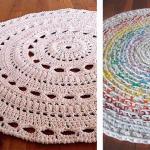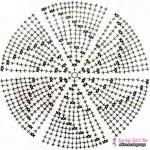How beginners can learn to make kanzashi. Technique, master classes, detailed video examples
Kazanshi - this unusual name with a Japanese accent hides an interesting female hobby with a simple technique of execution. Try yourself in a new hobby and decorate your world with spectacular satin flowers!
Women always strive to look stylish. Accessories decorated with flowers can be a bright addition to the look. We recommend that you create an unfading flower using the kanzashi technique with your own hands. For beginners, this type of creativity may seem incomprehensible and complicated, but believe me, everything is much simpler than you think. In the list of women's hobbies, Kazansha occupies one of the leading places; moreover, men are increasingly choosing this hobby for themselves!
A little history of beautiful needlework
Historically, the birthplace of this art form, like origami, is Japan, and it appeared around 1700. Japanese women were not allowed to wear necklaces or bracelets, so they decorated their hairstyles on a special scale.
Kanzashi (or kanzashi) were combs, sticks or hairpins decorated with flowers made of silk. Looking at kanzashi, one could judge the character and even the social status of a woman, because luxurious jewelry often cost even more than a kimono.

Kanzashi differed in color scheme and shape depending on the time of year. The products were created by famous craftsmen. The manufacturing technology of those times was different from the modern one - craftsmen used rice glue, each silk square piece was folded and a petal was formed, they, in turn, were collected on a thread and glued to the base. Thus, entire bouquets were collected and decorated with combs or hairpins.
Kanzashi and modernity
In our time, this Japanese technique has not lost its importance and has become popular in European countries. Needlewomen create flowers in the kanzashi style and decorate hair accessories and brooches with them. These accessories are especially popular among brides, because kanzashi flowers can be used to tastefully decorate wedding paraphernalia.


Young mothers will also be interested in this type of creativity - their little princesses will be happy to wear all kinds of bright elastic bands, headbands, and hair clips.
Master the kazansha technique from satin ribbons It’s not that difficult, but you’ll have to be patient and persistent, as this is quite painstaking work that requires attention, accuracy and perseverance. If you have already tried, or, the work will not seem difficult to you.

Starter kit for a beginner kanzashi master
So, the materials needed to get started:
- satin ribbons (for beginners, preferably 5 cm wide);
- beads or buttons (for the centers of flowers), a lighter or a candle (but be careful - the candle can smoke the ribbon);
- sharp scissors, needle and sewing thread;
- glue (we recommend choosing a colorless one, “Moment Crystal” is ideal);
- tweezers.

You can use a wide variety of accessories and materials: organza, tulle, rhinestones, sequins,...

Where to start: basic operating principles
For convenience, immediately cut the ribbons into identical squares and singe them so that the satin does not fray during the process (more experienced needlewomen use a soldering iron, it cuts the ribbon evenly and simultaneously singes the edges). In the original, in the kanzashi technique, there are only two types of petals - sharp and round. But modern craftswomen have come up with many modifications of petal shapes, which allows them to diversify their work and make them even more interesting.

Step-by-step technique creating kanzashi is as follows:
- Cut the satin ribbons into squares.
- Fold each square into a petal, singeing the ends and joints with a lighter.
- Gather the petals onto a strong thread.
- Glue the resulting blank to the base - it can be a felt circle or a cardboard circle covered with satin to match the flower.
- Glue or sew on the center of the flower (for example, a button).
- Add decor if necessary (for example, rhinestones or lace);
attach the finished kanzashi flower to the base (hairpin, brooch, headband, etc.). - Wait for the glue to dry completely and, if necessary, straighten the petals.
A short video tutorial:
So, you are already familiar with the basic principles of working in the kanzashi technique, so it’s time to act! But from these luxurious flowers you can create crafts and kanzashi paintings with your own hands, which will become an interior decoration or an unforgettable gift for loved ones!

Pleasure with benefit: the benefits of a new hobby
This simple type of needlework will also be interesting for children - crafts in the kanzashi style can be created together with the kids, making figurines out of them. For example, from basic sharp petals you will get christmas tree, you just need to glue them onto a conical cardboard base in rows. But be careful, small children must work under adult supervision!

If you don’t have enough imagination and experience, then you can get ideas for inspiration for creating kanzashi from master classes. Of course, you won’t be able to exactly repeat the work of another master, but as practice shows, after looking at the beautiful flowers of craftswomen, you will certainly begin to create your own You will develop your own style and handwriting.






Sunflowers using the kanzashi technique
Flowers in the Kanzashi style are becoming increasingly popular, so once you gain experience, it makes sense to give it a try.
You can sell your work on a variety of online platforms dedicated to handicrafts, as well as directly at fairs, which are often organized in many cities. Yes, participation in such events is often not free, but there you can not only sell your work, but also meet other artists and exchange experiences. A sea of positive emotions is guaranteed to you!


As you can see, it's not that complicated! The main thing is to start, and then you won’t be able to stop! Unfading flowers will bloom in your hands, and the kanzashi technique will become your favorite form of creativity!
From theory to practice: master classes
If you have carefully read this publication and now want to consolidate your knowledge in practice, proceed to master classes on making crafts with your own hands. Even more MK on Kanzashi is waiting for you.



Satin ribbons are one of the most affordable and effective materials, loved and used by many needlewomen. And this is not surprising, because the atlas proper care can be very durable, which means that products made from it will delight you with their beauty for a long time.
In addition, its consumption during operation is quite small, and the process of manufacturing all kinds of original accessories, exclusive interior decorations, decorative elements or unusual gifts‒ simple and accessible even for beginners.
If you haven't worked with ribbons yet, give it a try and see how easy and beautiful it can be. Moreover, there are many master classes that instruct in detail how to make various crafts from ribbons with your own hands.











From simple to complex
“Ribbon creativity,” in addition to its originality and beauty, also attracts with its diversity, because satin ribbons can be used both to make simple trinkets and to create real masterpieces or objects of art.
For example, here are the most simple options ribbon crafts that even your child can make:
- bows or flowers - these can be hair clips, decoration for a hoop, brooches, etc.;
- baubles and bracelets;
- various decorations for decorating gifts or home interiors - flowers, figurines, animals.




Crafts made from ribbons can also be complex, made using various well-known techniques (“kanzashi”, “artichoke” and others):
- entire panels and paintings are embroidered with satin ribbons, and aromatic sachets are made from them;
- they are used to decorate Easter eggs and wedding paraphernalia - making bouquets, decorating wine glasses, gift bottles of champagne, pillows for rings, etc.;
- Using ribbons and soap with your own hands, you can create entire baskets with flowers that will decorate any interior or make an excellent gift.
And these are not all possible crafts made from this material. For inspiration, you can use existing ideas in master classes or come up with something special of your own.
Satin ribbon rose
Of course, you can start with the simplest thing. To easily make unusual and complex things, you need to understand the basic techniques for creating products from satin ribbons. And the best way to see this is step by step in the master class.






Step by step description
- Although tulips, dandelions, hyacinths, primroses, and many other flowers are rolled from ribbons, the most popular flower among craftswomen is the rose. Roses are most often made using the kanzashi technique. For the flower, choose a ribbon of the desired color five centimeters wide. Cut the edge of the tape evenly and melt it with a lighter so that it does not fray. After this, place the ribbon so that its wrong side is facing up.
- Fold the upper left corner down (in the pictures of the master class there are arrows and the fold lines are indicated by dotted lines), and fold the lower left corner to the right twice.
- Take a needle and thread of the same color as your ribbon. Secure the resulting fold (the thread should be long, because you will then have to stitch the entire tape).
- Connect the two layers of ribbon by stitching from the fixed place to the right (there should be about one or two millimeters from the edge) and stop at the edge of the top ribbon.
- Fold the long edge of the ribbon to the left (in the direction of the arrow), and then the entire ribbon up to the right at an angle.
- Make sure that the right sides match and you have three layers. Sew them together, working upwards from the bottom corner. Then stop, but do not cut the thread, but tuck the ribbon down, as shown by the dotted line in the photo master class.
- Then turn it at an angle to the left and stitch again, only to the left along the top edge. Having connected the three layers, turn the ribbon in the direction of the arrow to the right, then at an angle downwards, and continue stitching.
- When there are already enough pleats (this will take approximately fifty centimeters of tape), sew stitches along the edge of the last of them, capturing two layers. Trim off the excess material and melt it with fire, but leave the thread.
- Tighten the thread and you will get a whole row of petals. Start forming a bud. The first petal must be made from the very beginning of the ribbon, pulling the thread where you secured the two folds. Twist it around these folds and you will have the center of the flower.
- Take another needle and thread and pull the bottom edges of the petals together. Then form a second petal, twist it onto the bud and hem it at the bottom in the same way.
- Continue on the same principle, adjusting the petals using thread tension. If you get a larger gathering on the bud, then your rose will be larger, looking like a blossom beautiful flower. Or you can do a little tension, and then a delicate bud will come out.
- Then twist the thread to the end and hem each petal from below. Carefully secure and trim the thread. Spread your flower.

Depending on how you want to use the rose, its bottom can be sealed with a piece of felt or ribbon, sewn to leaves, attached to a safety pin (for a brooch), a hairpin or hoop, etc. Such a delicate and beautiful product will be an excellent decoration or a gift for spring holidays like March 8th.
Little roses - simple


Ribbon poppy
In the master classes there are other ways to create various flowers with your own hands. For example, you can separately cut many parts from satin ribbon, shaped like leaves and petals. Then burn them, form a flower and glue the elements together, decorating them with beads or sequins.






Ribbon lily - photo MK



Bride's bouquet of ribbons
The made flowers can then be sewn onto fabric or embroidered with satin ribbons directly on the canvas, making various paintings and panels. Using the same technique, it's easy to make many roses for wedding bouquet brides All that remains is to make the base on which the flowers will be attached.


Easter eggs with ribbon decor
If you want to decorate Easter eggs, you can either simply cover the blank with fabric and then decorate it with flowers or ribbon bows, or use the “artichoke” technique - fold ribbons of different colors in the manner of fish scales and glue them to the surface of the egg.
You can paste over balls in a similar way, and then you will get original ones. Christmas decorations or just interior decorations.

Ribbon basket for a bouquet
To make an unusual basket, take a piece of oval soap and attach safety pins on it in a circle at the top and bottom (their number should be the same, and they should be placed on the soap at a distance of approximately six to eight millimeters from each other - just stick them into the bar of soap ).
Then take a ribbon (not very wide - about one to two centimeters), secure one edge with a pin and braid the walls of the basket as follows: hook the ribbon to the top pin, then lower it down, hook it to the bottom one and lift it up, continuing further until all walls will not be braided.
You will have a long end left at the bottom - you will need it to braid the bottom edge and form the side. Then you will need to move it up to decorate the top edge. Use the remaining ends of the ribbon to create a bow. Use wire to make a basket and a handle and braid it with a ribbon of the same color or make an assembly out of it.



Attach the ends of the handle to the soap and decorate the basket. You can put primroses in it and give it to a friend or mother on March 8, or decorate it in any other way.
Making such beautiful and unusual crafts– a great way to show your imagination and creativity and make nice gifts for yourself or loved ones.
Video master classes
Lydia Buluchevskaya
Kanzashi technique
Dear Colleagues! I would like to introduce you to my works in technology"Kanzashi".This hobby of mine has become partly the hobby of the whole family. My sons actively help in all preparatory stages: cutting blanks, singeing, folding. Daughter Polina, for whom we initially started making beautiful hairpins, helps in composing the compositions. comes up with new ideas. Dad will organize everything technical part, delivery of materials for work.
So " Kanzashi".
One of the popular and interesting trends in decorative and applied arts is technique hair accessories decorations kanzashi. This art comes from Japan (kanzashi, from the Japanese word kanzashi). The phrase kanzashi comes from several words - "kami" (hair) and "sasu" (stick in, since historically this women's accessory in the form of a hairpin, it was used to create the famous high Japanese hairstyles. Russian craftswomen “adapted” this type of art for Russians and just looking at poppies, Russian cornflowers, ears of wheat - you understand that this is ours, original, unique.
Wreaths, headbands.

Wreaths in folk style

New Year decoration

Elastic hairpins.



Spring motifs Headband for "Spring" matinee "Orthodox Spring"

Brooch "Spring"

A series of hairpins, elastic bands, headbands "Roses"





and this work was invented by my youngest son

Getting ready for Easter. Easter Egg in the style of "Artichoke"

Publications on the topic:
Kanzashi flowers look great not only on hair clips, headbands or elastic bands, but also on bracelets, necklaces, earrings, brooches.
Allow me to present to your attention my master class on making interesting toy, which can be very useful in class.
Nowadays, the kanzashi technique has become very popular. This technique allows you to create unique and inimitable products, as well.
Hello, dear colleagues! In my blog, I have already written about my love for flowers. I love fresh flowers, I collect flowers from ribbons and napkins, I make crafts.
Kanzashi is the art of creating hair jewelry, which originated in ancient times in Japan. For decorating girls' hairstyles.
Master class MK bonsai kanzashi
We have all heard about bonsai. And, probably, there is no person who would not like these amazing trees. But growing something like this is not only difficult, but also unrealistic! But I would like to have one... There are already bonsai made from beads, but for example, I have not seen bonsai using the kanzashi technique. But having been sick with this idea for quite some time, I finally decided to implement it!
So, let's make a bonsai using the kanzashi technique. I warn you right away, this is a rather long process and, moreover, will require additional floral bells and whistles.
You will need:
satin ribbon in several shades of green, 2.5 cm wide, about 5 meters;
floral wire;
green and brown tape;
small flowerpot;
pebbles for decorating the soil;
cotton pads;
regular and/or construction tape;
cement or alabaster;
tweezers;
burner or soldering iron, or lighter;
glue gun
To begin with, you should type bonsai photos in any search engine and look at real ones, well, to stimulate your imagination!
Now let's begin preparatory work. It took me about 250 petals for this tree, it’s not so scary, remembering our New Year’s exploits!
We make many, many narrow small petals from different shades of green. In principle, you can take one color, but several give a special charm. We make branches on the wire. To do this, first we make the top of three petals, and then drop a small drop of glue from a gun onto the tip of the wire, quickly attach one petal, quickly attach another one on the other side, and quickly press it with tweezers or long-nose pliers:
We glue the top according to the principle of the twig from Naira. We get a twig on a wire:
Let's collect the first branch. I advise you to immediately bend the wire slightly at the top so that you can connect several and also, so that they do not slide off, you can, if desired, fasten them with ordinary tape:
This is our main element from which we will assemble our bonsai. And you need a lot of these elements!
Connect with tape. If necessary, you can glue the tip. By connecting several wire branches, you can fasten them to each other. Don't forget to bend the wire a little - straight lines will interfere with each other!
Actually this is the whole process. We connect the wire branches, bend them as we see fit, it’s all imaginative and intuitive, and we get larger branches.
We bend the large ones in order to connect them together. This is a process - I bent it, applied it, bent it some more, didn’t like it, straightened it out and all over again. When the branch thickens, you can switch to brown tape. Large branches can also be fastened together with ordinary tape. Just for convenience.
It seems that we have outlined large branches, but our tree should thicken downward. Wrapping tape in many layers is not very good; it is better to use either regular tape or single-sided construction tape. The wire at the bottom can be slightly bent to form a kind of fan, so that there is more volume. Don’t try to wrap the construction tape too carefully, let it have creases and folds - it’s more natural.
Since I was photographing the MK in the process of inventing it, it was here that it dawned on me, because the branches should begin to thicken earlier. And so I removed the construction tape and made each of the branches more powerful from top to bottom (using tape and then tape). And again she connected the branches together. I wound it with tape; to thicken it, you can put pieces of cotton wool or cotton pads under it.
Here is my bonsai. Now he needs to be imprisoned. You can use anything: a bowl, a bowl, or I took a small flowerpot.
Cement or alabaster can be used to secure and weigh it down. Alabaster is probably better, but I have cement, which I probably didn’t make too liquid... Oh well, it dried faster.
The final touch is to take decorative stones and glue them and (if desired) a few branches without wire.
That, in fact, is the whole process. I believe that saying “you need to have exactly this many branches and fasten them exactly like this” is not very feasible in this case. The creation is truly fantasy and that’s its beauty! And the result is a miniature tree that will now live in my house and delight everyone.
2.
3.
4.
5.
6.
7.
8.
9.
10.
11.
12.
13.






